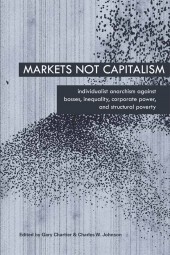At Foundation for Economic Education, Patrick Carroll (“Responding to Reich, Part 10: How to Have Infinite Growth on a Finite Planet,” Feb. 18) Patrick Carroll attempts to explain why critics of capitalism are wrong to say that infinite growth is impossible on a finite planet.
As for the idea of infinite growth on a finite planet, Reich falls into the common mistake of thinking that economic growth is necessarily tied to physical growth. As I explained in a recent article, economic growth is really about value, not stuff, so the physical limitations of the planet — while very real and consequential — are not a good reason to be suspicious of continuous economic growth as such.
Previously, he made the same argument at greater length against David Attenborough:
Sir David Attenborough expressed a very popular sentiment when he said in 2013: “We have a finite environment — the planet. Anyone who thinks that you can have infinite growth in a finite environment is either a madman or an economist.”
The problem with this thinking is that it completely misconstrues the concept of growth in economics.
“By growth, economists mean value-creation exchanged in the marketplace,” writes Joakim Book. Once we understand the economic perspective, it becomes clear that growth in this sense can be practically infinite, even in a world of limited physical resources.
“Although we live in a world of a limited number of atoms,” write Marian Tupy and Gale Pooley in their 2022 book Superabundance, “there are virtually infinite ways to arrange those atoms. The possibilities for creating new value are thus immense.”
As Tim Worstall writes, “GDP is not minerals — or anything else physical — processed. It’s value added. The limit to GDP is therefore in knowing how to add value. Therefore, while physical resources are obviously scarce — there’d be no subject called economics if that were not so — it is not physical resources which limit economic growth. It’s knowledge.”
He also states quotes economist Josh Hendrickson to the effect that economic growth “is about ‘finding more efficient uses of resources.’”
But if the typical debate between degrowthers and ecomodernists degenerates into their talking past one another because of failure to agree on a coherent definition of “growth,” or even clearly state differing definitions of growth, Carroll simply shifts the ambiguity to new ground by failing to define “value” adequately. He fails to clarify whether he’s talking about exchange-value or use-value, or to explain why an increase in use-value or efficiency should necessarily result in increased exchange-value.
In fact capitalism’s imperative of ever-expanding accumulation and profit operates through “value-creation,” not primarily in the sense of creating new utilities or use-values, but of finding previously non-commodified things to commodify. Sharon Kuruvilla (“Neon Veins, Iron Fist,” Feb. 21) writes:
Borrowing a phrase from Frankfurt School theorist Jürgen Habermas, cyberpunk explores the “colonization of the lifeworld by systemic imperatives.” For a bit of background for those of you not aware of Habermas’s thought, Habermas defines the lifeworld as the everyday domain of intrapersonal values, meanings, and cultural norms; it’s the everyday world we all inhabit, governed by human agency and community. He defines this against what he defines as systemic imperatives – which for him are large-scale impersonal mechanisms such as the market and bureaucracies that are governed entirely by instrumental rationality (efficiency, control, and goal-orientation). For Habermas, while systemic imperatives have their role in governing societies, contemporary societies tend to colonize the lifeworld with the systemic imperatives — in plain english, the everyday world we live in is slowly replaced with a world where the only imperative is that of the cost-benefit analysis — does this make me better?
And when capitalism does increase use-values, that should not result, in the long run, in an increase in exchange-value unless it also requires increased material inputs like labor or natural resources. The natural tendency, absent monopoly pricing through enclosures like intellectual property, is for technological advances that reduce the need for resource inputs to similarly reduce the exchange-value of outputs.
As I argued elsewhere, the natural tendency of technological progress, efficiency, and abundance is deflationary — i.e., their tendency is to destroy exchange value.
Although most degrowthers are not as clear on the matter as they could be, the prevailing idea of degrowth is not a reduction in material living standards, but an end to growth in GDP and in ecological footprints (i.e. the consumption of material inputs) — the two of which are linked. GDP is a metric of the total exchange-value of all goods and services produced; other than embedded rents from artificial scarcities like intellectual property, the exchange value of goods and services is primarily a measure of the total cost of inputs. So the idea of infinite growth resulting entirely from expansion of exchange-value, with no increase in material resources consumed, is inconsistent with reality unless a major part of GDP consists of unearned monopoly rents. And that’s particularly true for the idea of economic growth through finding more efficient uses for resources; more efficient resource use should reduce production cost, and hence price and GDP.
Applying this principle to Carroll’s argument, the only way “knowledge” can result in economic growth is if it is enclosed as a source of profit through artificial scarcities like intellectual property. Otherwise, its natural tendency is toward degrowth.
The economic model of growth in exchange-value through enclosure, even as technologies of abundance decrease the material cost of producing a given level of use-value, was described by Peter Frase as the “anti-Star Trek.” In the anti-Star Trek universe, the same post-scarcity technologies — matter-energy replicators, etc. — exist as in the regular Star Trek. The difference lies in the socially constructed relations of ownership.
Anti-Star Trek takes these same technological premises: replicators, free energy, and a post-scarcity economy. But it casts them in a different set of social relations. Anti-Star Trek is an attempt to answer the following question:
Given the material abundance made possible by the replicator, how would it be possible to maintain a system based on money, profit, and class power?…
Like industrial capitalism, the economy of anti-Star Trek rests on a specific state-enforced regime of property relations. However, the kind of property that is central to anti-Star Trek is not physical but intellectual property, as codified legally in the patent and copyright system….
This is the quality of intellectual property law that provides an economic foundation for anti-Star Trek: the ability to tell others how to use copies of an idea that you “own”. In order to get access to a replicator, you have to buy one from a company that licenses you the right to use a replicator. (Someone can’t give you a replicator or make one with their replicator, because that would violate their license). What’s more, every time you make something with the replicator, you also need to pay a licensing fee to whoever owns the rights to that particular thing. So if the Captain Jean-Luc Picard of anti-Star Trek wanted “tea, Earl Grey, hot”, he would have to pay the company that has copyrighted the replicator pattern for hot Earl Grey tea.
If anything, the imperative toward capitalist growth in the real world has driven a reduction in use-values and utilities alongside the increase in exchange-values. What we actually see is an increasing tendency toward what’s variously called enshittification (Cory Doctorow) or the rot economy (Ed Zitron) or the supremacy of business over industry (Thorstein Veblen). There is more profit in stripping assets, cannibalizing productive enterprises for the parts — and in the process reducing utility to the consumer — than in creating new utilities.
Kuruvilla describes the cyberpunk reality that has resulted from the subordination of the digital public square and the body politic to the imperatives of capital.
From the toxic social networks produced by digital publics being infested by bullshit and rage (not helped by today’s digital intelligence), biotech CEOs promising designer children, a president backed by technocapitalist elites such as Elon Musk and venture capitalists, a vice president inspired by a neoreactionary thinker (Curtis Yarvin) in favour of a “digital patchwork”, Elon whining about the “woke” design of female game characters, or violence being more and more accepted as a means to achieving one’s ends, the lifeworld we now all inhabit appears more closer to that of cyberpunk fiction than that envisioned of any optimistic futurist such as Johan Norberg, Stephen Pinker or Iain Banks.
But none of this is an inevitable side-effect of technology as such. The mistake of theorists like Lewis Mumford (The Pyramid of Power) and Jacques Ellul (Technology) was to see totalitarianism as inherent in cybernetic technology itself, rather than in the power structure into which it was adopted. Norbert Wiener himself, the father of cybernetics, made that distinction, according to Kuruvilla. He
criticized the drive of capitalists and fascists to reduce people to specific, clearly delineated roles and responsibilities. His critique of this drive, not just moral but instrumental – reducing the broad scope of what people can do limits their greatest potential. A person is not born with a specific role to play given by their genetic inheritance, rather they are capable of constant engagement with the world and thus are capable of a great many things throughout their life. It’s this possibility that our aspiring autocrats and oligarchs wish to crush.
To take one example, the enshittification of social media results from the legal enclosure of network effects as a source of rent, artificially increasing switching costs and thereby enabling corporate owners to create walled garden “Death Star” platforms. The way to prevent such enshittification and totalitarian enclosure, on the other hand, is what Cory Doctorow calls “adversarial interoperability”: eliminating the artificial legal barriers to ordinary people building their own instances atop of or outside the platforms of Facebook, Twitter, Uber, Amazon, etc., without their permission.
The same is true of most of the toxic aspects of corporate globalization, which are not the result of production or transportation technologies as such but rather of the social structure. The “comparative advantage” that drives most outsourcing and offshoring is an artificial one, resulting from state interventions that make long-distance shipping artificially cheap (massive transportation subsidies, a foreign policy centered on controlling fossil fuel resources, etc.) and facilitate legal monopoly over product designs contracted out to nominally independent shops (draconian global intellectual property accords, which enable a “manufacturing” corporation to outsource all actual production to nominally independent contractors, while maintaining sole legal right both to authorize production of given designs and to dispose of the product). The primary “efficiency” sought out by Western capital in Third World countries is cheap, easily exploitable labor — labor which is, in fact, as skilled or more skilled than much of the labor in Western countries. And exporting production to where the cheap labor is is artificially feasible because of the interventions already mentioned. Absent the transportation subsidies and IP laws, factories in Asia could simply disregard Western patents and produce identical goods for sale to their own domestic markets at a fraction of the price, rather than selling them for a pittance to be marked up several hundred percent on Walmart shelves. And under those circumstances, with all costs fully internalized and artificial barriers to production removed, it would be more efficient to relocalize production of a major share of goods consumed in the West.
That is not to say that protectionism is good or trade is bad, obviously. What’s bad is false efficiencies created by externalities and artificial scarcity.
What’s needed, ultimately, is to strip capital of its ability to pursue an extensive growth model based on ever-growing consumption of resources, and to enclose what efficiencies it does create as a source of rents and passing them along to the consumers. Just as the Diggers almost 400 years ago tore down physical walls and began cultivating a reclaimed commons, we must tear down the legal walls and reclaim for ourselves the benefits created by our own collective intellect.







